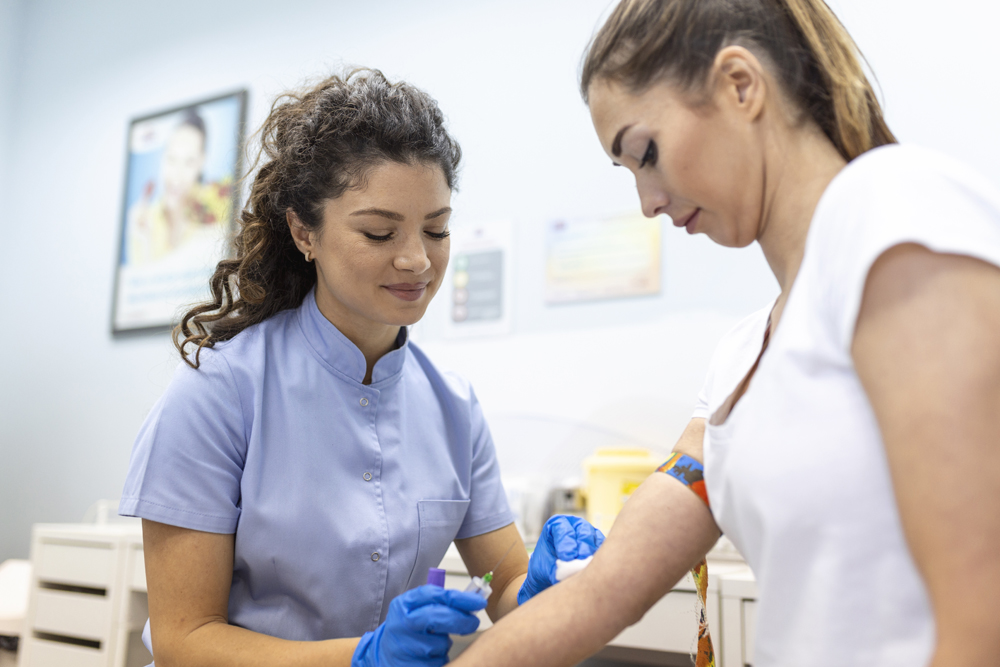
Introduction
There are several reasons why doctors prescribe blood testing. Blood tests can be essential for your medical care for several reasons, including keeping tabs on your drug levels and assessing your results during the diagnostic process. Blood tests are performed for various reasons, including evaluation of organ function (such as the liver or kidneys), diagnosis of disease, assessment of risk factors, monitoring of drugs, and evaluation of blood coagulation. Preparing oneself both mentally and physically for a blood test is essential. To make your next blood test easier, we have prescribed certain tips for blood test.
Preparation for blood test:
Here are a few tips for blood test that would help you prepare better for your next blood test.
- 1. Fasting: If your doctor has ordered a fasting blood test, you should abstain from all food and liquids, except water, for 8-12 hours before the procedure. Food and drink contain nutrients that can enter the bloodstream and potentially affect test findings when you eat food before your blood test. If you accidentally consume something other than water before having your blood drawn, please let the medical personnel know. Your doctor needs to know so they can interpret your testing best. The fasting period is complete, and you may consume whatever you choose after your blood has been drawn for the test.
- 2. Stay Hydrated: If you’re fasting for a blood draw, make sure you drink enough water to keep yourself hydrated and reduce any discomfort you might have. Blood volume can be increased by drinking plenty of water. It also makes veins more pliable so that you can draw blood more quickly. However, caffeine-containing beverages, such as coffee, should be avoided because of their potential to sap your body of fluids. Because of shifts in electrolytes and other blood-chemical levels, the results of these tests may be unreliable if the patient is dehydrated.
- 3. Sleep: Get a good night’s sleep the night before your blood is drawn. Your body needs to relax before you go for a blood test. Stay calm and relaxed before the blood test. Before having blood drawn, it is advised that you take a few minutes to relax.
- 4. Minor Warm-Up: The arm from which blood will be collected must be warmed up to prevent the onset of cold sweat. In order to make the veins visible, many doctors conduct a small warm-up before drawing blood. A warm compress applied to the area for 10–20 minutes should do the trick. In addition, elevating your skin temperature and increasing blood flow to your extremities by dressing warmly before a blood test is another option. The phlebotomist will be able to find your veins with your cooperation quickly.
- 5. Taking medications: In the event that your doctor has not instructed you to abstain from medication prior to the test, take your prescription(s) as directed. Before letting you leave the blood collection area, the phlebotomist will examine the puncture site to ensure that bleeding has ceased once the blood has been obtained. Similarly, if you are taking any medications for diabetes, hypertension, heart disease, kidney disease, antibiotics, or biotin, please provide information on the medication(s), including dosage and the time of day the last medication was taken.
- 6. Reduce Stress: When you’re anxious about getting a blood test, you may experience a spike in tension or anxiety. Unfortunately, stress raises blood pressure, causes veins to contract, and makes blood collection more of a challenge. If you come across as nervous, your phlebotomist will likely feel much more under pressure and uneasy. If you know how to calm yourself before the test, you’ll be more prepared, and the phlebotomist will be more likely to discover a vein on the first try.
What to expect during blood tests?
Knowing the blood test procedure step-by-step and what to expect before, during, and after a blood draw might help alleviate some of the anxiety associated with the experience. As part of normal precautions against spreading disease, the phlebotomist will change into fresh gloves and disinfect their hands.
The next step is to have a flat elastic band (tourniquet) stretched around your arm rather tightly to squeeze your veins and fill them with blood, making them more visible. A blood sample is typically taken from a vein in the inner elbow, the underside of the forearm, or the palm of the hand.
A tiny tube will be inserted into a vein by a needle. When there is an adequate amount of blood in the tube, it is removed, and the seal is created automatically. The needle is left in place; if more tubes are needed, a new tube is attached to its tip. When the phlebotomist draws blood and places the final drop into the final tube, they remove the needle and cover the puncture site with a little piece of gauze. While they are getting the tubes ready to send to the lab, she will ask you to apply pressure to the region. Once the needle has been removed, a bandage or gauze is placed over the wound to staunch the bleeding. You need not be worried, as Diagnostic Center in Mumbai Agilus Diagnostics knows all that is required to Handle a patient.
